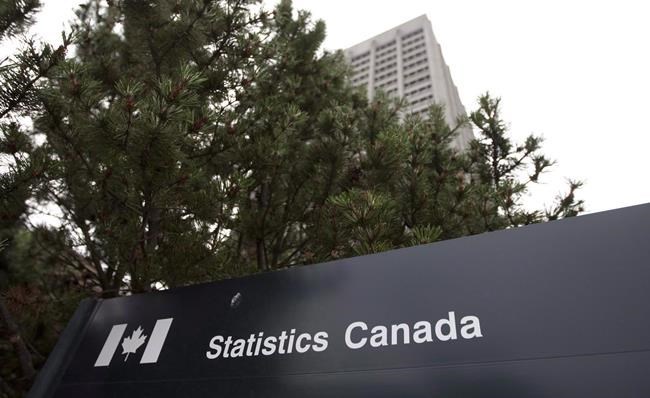OTTAWA ŌĆö The Canadian economy edged slightlyhigher in August and initial estimates pointed to growth continued in September as worries of an impending recession grow.
Statistics sa╣·╝╩┤½├Į said Friday real growth domestic product gained 0.1 per cent in August, topping its initial estimate that suggested no growth for the month.
In its initial estimate for September, the agency indicated the economy grew by 0.1 per cent again.
The preliminary estimate for September puts the annualized growth rate for the third quarter at 1.6 per cent for the July-to-September period, down from an annual pace of 3.3 per cent in the second quarter.
Karyne Charbonneau, executive director, economics, at CIBC, said the economy may have slowed, but the good news is there was at least some growth.
"While we will be revising our overall 2022 growth expectation to be a tad higher, this does not alter our view that the economy will stall in the months ahead, and the lack of momentum late in Q3 is aligned with that," Charbonneau wrote in a report.
"With these latest growth figures only slightly below estimates of potential growth, we will need to see this further slowing of the economy to bring inflation back to target. This supports the notion that while we are getting closer to the end of the hiking cycle, there is still a little left to do."┬Ā
The Bank of sa╣·╝╩┤½├Į hiked its key interest rate target by half a percentage point earlier this week to 3.75 per cent as it said the economy is overheated, meaning demand is outpacing supply.
And while the central bank said it is nearing the end of its rate tightening cycle, governor Tiff Macklem said it isn't done yet and more rate hikes are expected to be needed.
The central bank is raising its key interest rate in an effort to bring inflation back down to its target of two per cent. Its next scheduled interest rate decision is set for Dec. 7.
Higher borrowing costs have started to take a toll on growth with home sales in sa╣·╝╩┤½├Į taking a hit as higher mortgage rates have increased costs for homebuyers.
In its latest monetary policy report, the Bank of sa╣·╝╩┤½├Į forecast growth at an annual rate of 1.5 per cent for the third quarter before slowing to an annual pace of 0.5 per cent in the final three months of the year.
TD Bank senior economist James Orlando said though the data Friday was encouraging, the overarching narrative of a decelerating Canadian economy hasn't changed.┬Ā
"Given high inflation and the lagged impact of higher interest rates, we are seeing the effect of this in the goods sector and expect to see the same in the service side going forward," Orlando wrote in a report.
"The Bank of sa╣·╝╩┤½├Į decided to slow its pace of rate hikes on Wednesday as it believes a slowing in economic growth is forthcoming. Though this is starting to show up in the data, we think the BoC will need to continue to raise its policy rate to 4.25 per cent in order to achieve the deceleration that is sufficient to bring down inflation."
In its report Friday, Statistics sa╣·╝╩┤½├Į said growth in services-producing industries was offset by a decline in good-producing industries.
The report said the retail trade sector rose 1.2 per cent in August after falling to its December 2021 level in July, while wholesale trade gained 0.9 per cent and the agriculture, forestry, fishing and hunting sector added 3.9 per cent in the month, led by an increase in crop production.
The public sector expanded 0.3 per cent in August.
Meanwhile, the construction sector contracted 0.7 per cent in August, its fifth consecutive month showing a decline.
The report noted that while residential construction was down for the fourth time in five months as it pulled back 0.7 per cent, activity in August was still eight per cent above the February 2020 pre-pandemic level.
The manufacturing sector fell 0.8 per cent, while mining, quarrying and oil and gas extraction contracted 1.0 per cent in August.
This report by The Canadian Press was first published Oct. 28, 2022.
The Canadian Press



